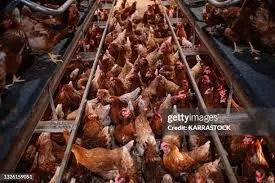Effective Poultry Feed Grinding with Hammer Mill Technology for Optimal Nutritional Value
Dec . 09, 2024 23:38 Back to list
Effective Poultry Feed Grinding with Hammer Mill Technology for Optimal Nutritional Value
The Importance of Poultry Feed Hammer Mills in Modern Agriculture
In the modern agricultural landscape, the significance of efficient and high-quality poultry feed cannot be overstated. The nutritional demands of poultry—whether chickens, ducks, or other birds—are crucial for their growth, health, and overall productivity. One of the pivotal tools in producing quality poultry feed is the hammer mill, a machine designed to crush and grind grains into finely milled feed. This article explores the role of poultry feed hammer mills, their operation, benefits, and impact on the poultry industry.
Understanding Hammer Mills
A hammer mill is a type of crusher that uses rotating hammers to break down materials into smaller pieces. In the context of poultry feed production, hammer mills are utilized to process various types of ingredients, including grains like corn, wheat, barley, and other nutritional supplements. The design of a hammer mill typically involves a feed hopper, a grinding chamber, and a discharge outlet. The raw materials are fed into the hopper, where they are crushed by the rapid motion of the hammers against a perforated screen.
The Role of Hammer Mills in Feed Production
The primary function of a hammer mill is to reduce the particle size of feed ingredients. This is vital for several reasons
1. Improved Feed Digestibility Smaller particle sizes enhance the digestibility of feed. Poultry possess a limited ability to break down feed mechanically, so finer particles make it easier for birds to extract nutrients.
2. Uniformity in Feed Composition Hammer mills ensure a consistent particle size, leading to uniform feed mixing. This consistency is crucial for achieving balanced nutrition across batches of feed, which supports optimal growth and health in poultry.
4. Enhanced Feed Formulation The flexibility of hammer mills allows feed manufacturers to experiment with different formulations. By incorporating various nutrients and additives, producers can tailor feeds to meet specific requirements of different poultry species and production stages.
Advantages of Using Hammer Mills in Poultry Feed Production
poultry feed hammer mill

The benefits of incorporating hammer mills into poultry feed production are substantial
- Versatility Hammer mills are capable of grinding a wide variety of materials, making them suitable for multi-species feed production.
- Scalability They can be used for both small-scale operations and large commercial enterprises, allowing farmers to expand their feed production in line with growth demands.
- Automated Options Many modern hammer mills come with automation features, which streamline the production process, reduce labor costs, and enhance operational efficiency.
- Improved Nutritional Value The ability to finely grind ingredients can lead to enhanced nutritional profiles in feed, promoting better health outcomes for poultry.
Impact on the Poultry Industry
The integration of hammer mills in feed production facilities has had a profound impact on the poultry industry. The ability to produce high-quality, cost-effective feed not only supports the health and growth of poultry but also contributes to the overall efficiency and profitability of poultry farming. As consumer demands for high-quality poultry products increase, the reliance on advanced machinery like hammer mills is likely to rise.
Furthermore, with the ongoing emphasis on sustainable and responsible farming practices, the hammer mill's efficiency in utilizing feed resources aligns well with global agricultural goals. By reducing waste and improving feed conversion rates, these machines play an essential role in promoting sustainable poultry production.
Conclusion
In summary, poultry feed hammer mills are indispensable tools in the poultry industry, providing numerous advantages that enhance feed quality and production efficiency. Their role in ensuring that poultry receive optimal nutrition cannot be underestimated, and as the industry continues to evolve, the importance of hammer mills will only grow. By investing in quality feed production technology, farmers can ensure the long-term health and productivity of their flocks, ultimately contributing to the industry's sustainability and success.
-
Hot Sale 24 & 18 Door Rabbit Cages - Premium Breeding Solutions
NewsJul.25,2025
-
Automatic Feeding Line System Pan Feeder Nipple Drinker - Anping County Yize Metal Products Co., Ltd.
NewsJul.21,2025
-
Automatic Feeding Line System Pan Feeder Nipple Drinker - Anping County Yize Metal Products Co., Ltd.
NewsJul.21,2025
-
Automatic Feeding Line System - Anping Yize | Precision & Nipple
NewsJul.21,2025
-
Automatic Feeding Line System - Anping Yize | Precision & Nipple
NewsJul.21,2025
-
Automatic Feeding Line System-Anping County Yize Metal Products Co., Ltd.|Efficient Feed Distribution&Customized Animal Farming Solutions
NewsJul.21,2025






